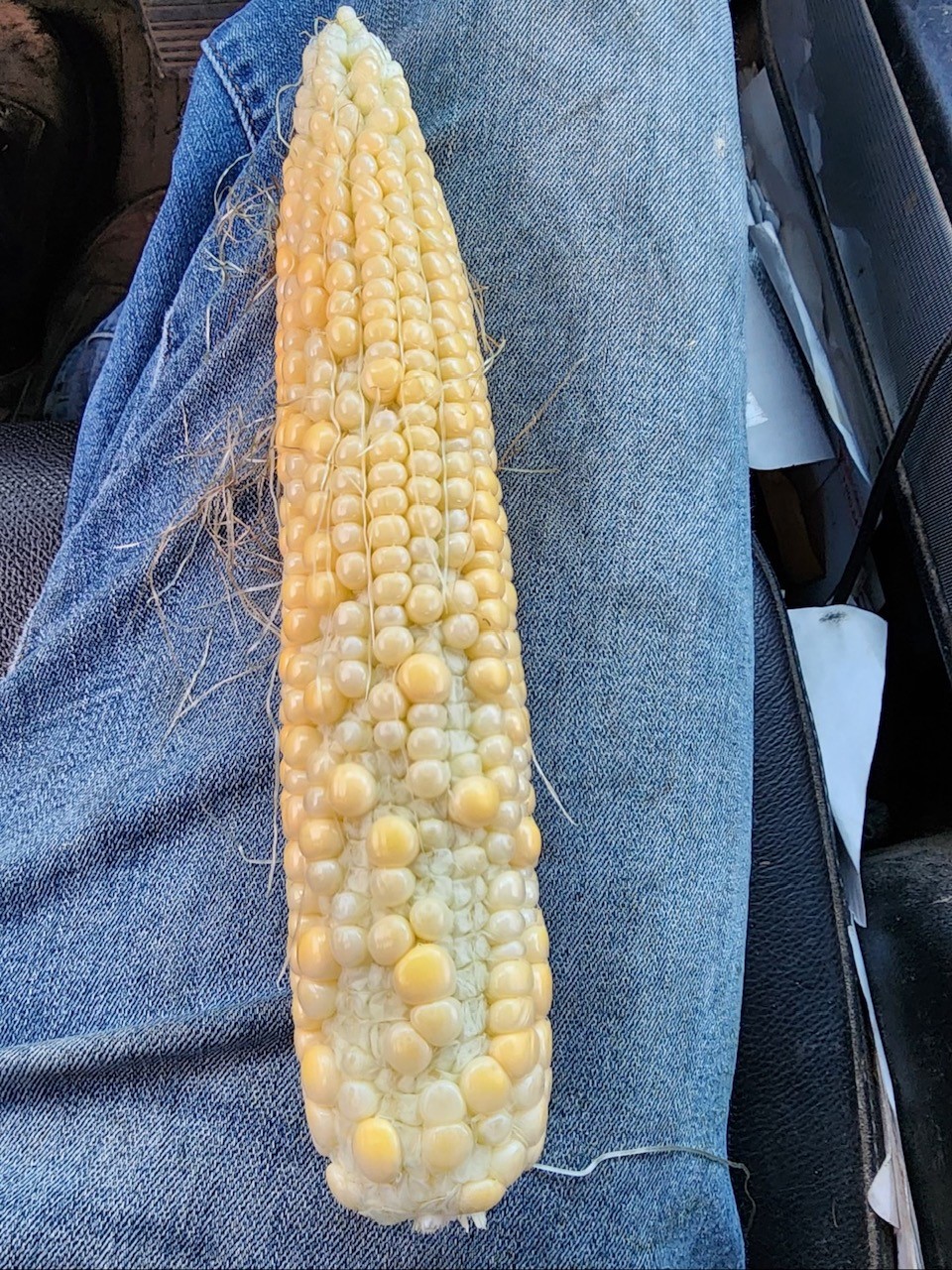The process of pollination is one of the most critical periods for grain yield determination in corn and successful pollination is largely determined by the successful synchronization between silk elongation, tassel emergence, and pollen shed. In certain conditions, poor pollination and kernel development can occur, which can result in significant reductions in kernel numbers and yield. Typically, one of the most common instances of poor pollination is due to delayed silk emergence, often caused by drought conditions, which can result in missing kernels at the tips of the ears. However, in certain instances the opposite can actually happen, where the silks emerge too early and missing kernels are observed at the base or “butt” of the ear.
Silk elongation in corn typically begins near the base of the ear and is initiated approximately during the V12 to V14 vegetative growth stages. The first silks to emerge from the husk are from the lower portion of the ear and silks will continue to emerge for approximately one week. Once silks have emerged from the husk, they will start to elongate at a rate of 1 – 2 inches per day and begin to slow over time. In addition, silks will cease growth once they have come in contact with pollen grains. Therefore, if pollen is not available, silks will continue to elongate for a period of about 9 days following emergence and can result in excessively long growth (Figure 1).

Figure 1. Excessive silk growth on corn ear due to lack of pollen availability in Central Indiana during the 2022 growing season. (Photo Credit: Dan Quinn)
In certain cases, silks can actually emerge from the husk multiple days prior to pollen shed. This response is often counterintuitive to what many of us have been taught, which is that the tassel always emerges before the silks. However, many modern hybrids have improved genetics which include improved drought tolerance. One way these genetic improvements combat drought stress is through quicker and more vigorous silk emergence, which helps reduce the risk of delayed silk emergence caused by drought conditions. Therefore, when growing conditions are more favorable, silk emergence can occur too quickly which results in the earliest emerging silks (connected to potential kernels at the base of the ear) to emerge and lose viability before pollen is shed, thus resulting in poor pollination and missing kernels at the base of the ear (Figure 2). In addition, favorable growing conditions, combined with cooler weather, sufficient soil moisture, and cloudy conditions can sustain silk growth and elongation, which causes silks to emerge too soon and also become excessively long, which can also cause pollination issues due to silk overlapping or shading.

Figure 2. Poor pollination and missing kernels at the base of the ear caused by silks emerging too early prior to tassel presence and pollen shed. (Photo Credit: Brian Early, Indiana Pioneer Field Agronomist, 2023)
Overall, it is always important to check pollination success and kernel development during the corn growing season. In addition, be sure to pay attention to silk development, elongation, and where the presence of missing kernels is on the ear to further understand where issues may have occurred.
Additional Resources:
Nielsen, R.L. 2018. Unusually Long Silks in Corn. Corny News Network. Purdue Univ. Ext. https://www.agry.purdue.edu/ext/corn/news/timeless/longsilks.html


